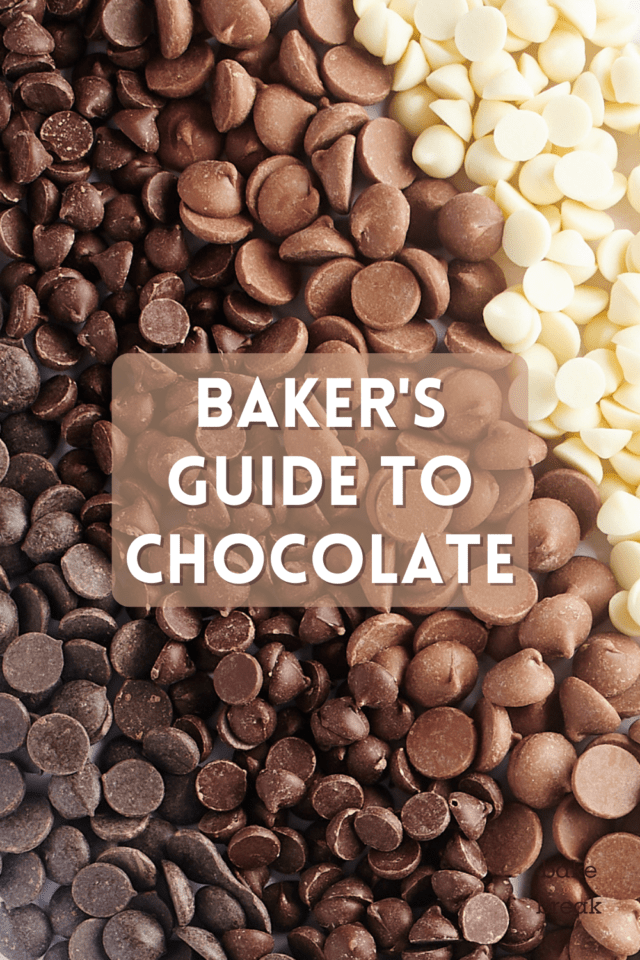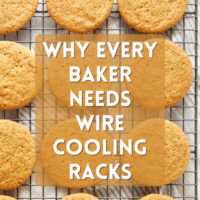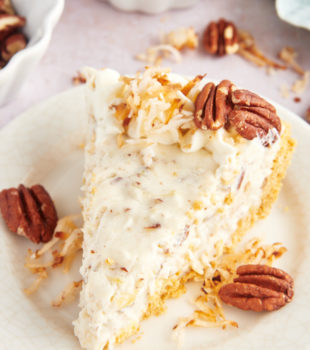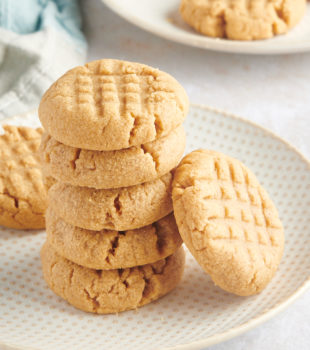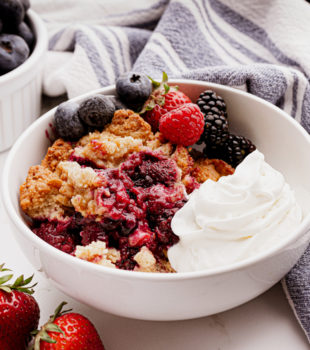Let’s take a look at the different types of chocolate and their uses in baking. Whether you’re a novice baker or a seasoned pro, this is handy information for those of us who love homemade chocolate desserts!
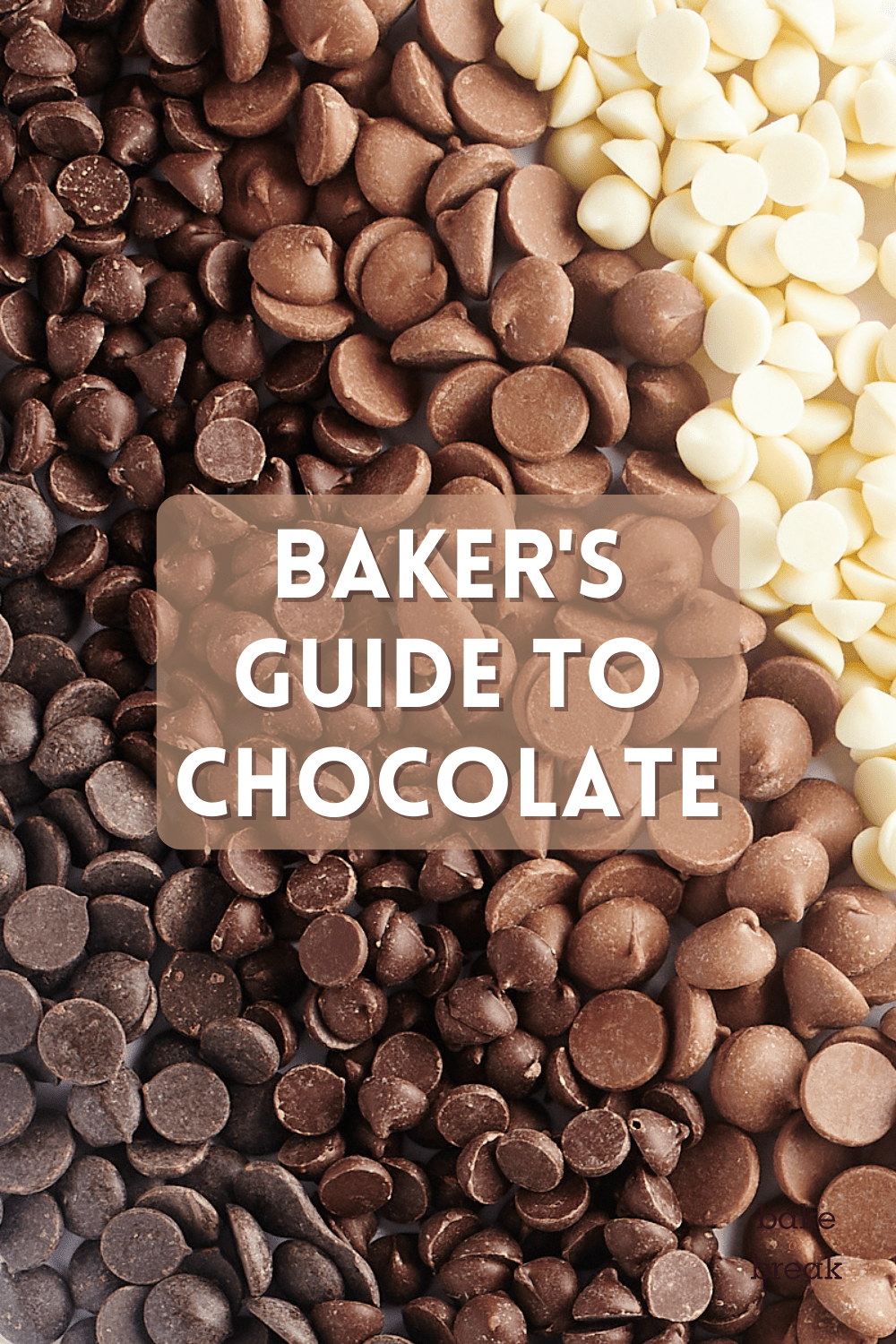
Table of contents
- Types of Chocolate and How to Bake with Them
- Where Chocolate Originates
- What Chocolate Percentages Mean
- Unsweetened Chocolate
- Dark Chocolate
- Milk Chocolate
- White Chocolate
- Chocolate Chips vs Chocolate Bars and Discs
- Cocoa Powder
- Other Types of Chocolate
- What Makes a Good Quality Chocolate
- How to Store Chocolate
- More Ingredient Guides for Bakers
Types of Chocolate and How to Bake with Them
Chocolate is one of the most popular baking ingredients, and chocolate desserts are always a crowd-pleaser. In fact, it’s one of the most searched-for flavors here at BoB!
We home bakers have quite a selection of baking chocolate available to us, but it can be a lot to decipher. Whether you’re trying to understand the percentages listed on chocolates or wondering if you’ve got the right kind of cocoa powder, I’m here to help in this simple guide to the most common types of chocolate.
There are so many different types of chocolate available on the market these days, it can be difficult to know which one to choose for your baking needs. I’m here to help with this simple guide to the most common types of chocolate and how to bake with them.
And because we’ll all inevitably be craving chocolate, I’m also sharing some great chocolate recipes that use each kind of chocolate!
Armed with your knowledge of chocolate, you’ll be able choose your chocolate wisely. Whether you’re looking for a specific percentage or just a general kind of chocolate, using this information will help you find the right chocolate for your recipes or just for eating on its own.
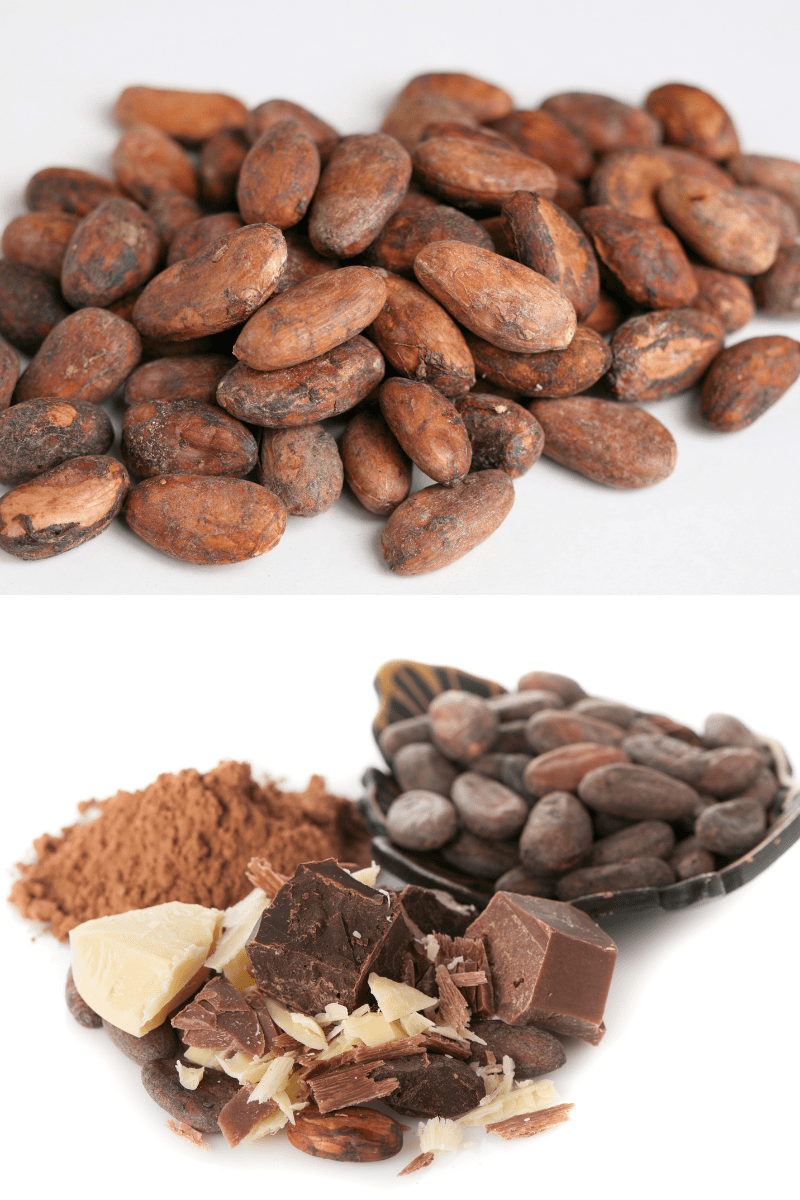
Where Chocolate Originates
Chocolate comes from cacao beans, which are the seeds of a fruit tree. The inside of the seed is ground into powder or liquefied. That’s referred to as chocolate liquor. That can be further broken into its two components, cocoa solids and cocoa butter. Cocoa solids are the source of chocolate color and flavor. Cocoa butter is the fat component of the cacao bean.
What Chocolate Percentages Mean
The percentages applied to chocolate products refer to the total amount of cocoa solids and cocoa butter by weight. That is, it tells you how much of the chocolate is from the cacao bean. Chocolate products often have extra cocoa butter added, so the percentage includes chocolate liquor as well as any additional cocoa butter.
Because cacao percentage reflects the total amount of two parts of the cacao bean, the ratio of those two parts can vary quite a bit. That is why two chocolates with the same percentage may taste very different. But in general, the higher the cacao percentage, the stronger the chocolate flavor.

Unsweetened Chocolate
Unsweetened chocolate is 100% chocolate liquor plus just enough fat to make it solid. Because of the lack of sugar, unsweetened chocolate has a bitter taste and is generally not eaten on its own. This type of chocolate is used mostly in recipes where the goal is to have a deep, rich chocolate flavor. The sugar in a recipe will tame the chocolate’s bitter taste.
Recipes made with unsweetened chocolate
- Chocolate Torte
- Mini Chocolate Bundt Cakes with Peanut Butter Filling
- Hazelnut Mocha Brownies
- Oatmeal Brownie Bars
- Chocolate Sheet Cake
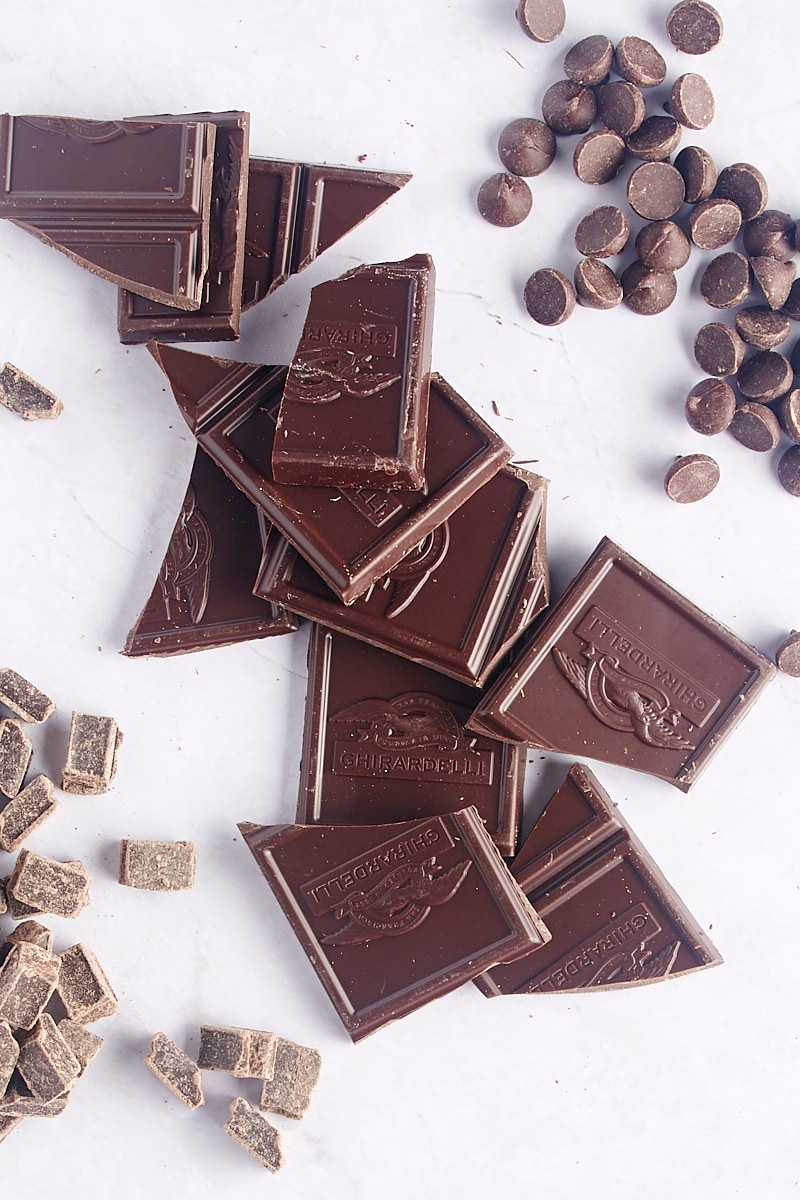
Dark Chocolate
Dark chocolate is comprised of chocolate liquor or unsweetened chocolate plus sugar and cocoa butter. There may also be other flavors like vanilla and an emulsifier such as lecithin for smoothness. Most dark chocolate has a range of anywhere between 35% and 80% cacao.
Good quality dark chocolate usually does not contain added dairy, although it can contain a small amount and still be labeled as dark chocolate. The absence of dairy is what helps make it firmer than milk chocolate or white chocolate.
When you think about chocolate chips, you’re likely thinking of dark chocolate. It’s very commonly used in baking. I like about 70% cacao for my dark chocolate, but it’s a tasty and worthwhile experiment to figure out what you like best in general and for specific uses.
Semisweet chocolate vs bittersweet chocolate
The terms bittersweet chocolate and semisweet chocolate are both used interchangeably with dark chocolate. In fact, the two can usually be substituted for each other in baking. While they are technically the same, most chocolate that is labeled bittersweet has a higher cacao content than semisweet chocolate. For most purposes, a chocolate with at least 66% cacao content is considered bittersweet.
Despite the specific labels of dark chocolate, you’ll find that different brands and even different varieties within brands will taste more or less sweet than others. That’s because the amount of sugar in them varies, meaning you’ll get varying degrees of sweetness in dark chocolates. That may even mean that one bittersweet chocolate may taste sweeter than another semisweet chocolate.
Sweet dark chocolate
Sweet dark chocolate is a bit of an outlier. It’s considered dark chocolate because of its lack of milk solids, but it’s sweeter than other types of dark chocolate. And there may be only 20-40% cocoa solids in this type of chocolate. A classic example of a sweet dark chocolate is German’s chocolate.
Recipes made with dark chocolate
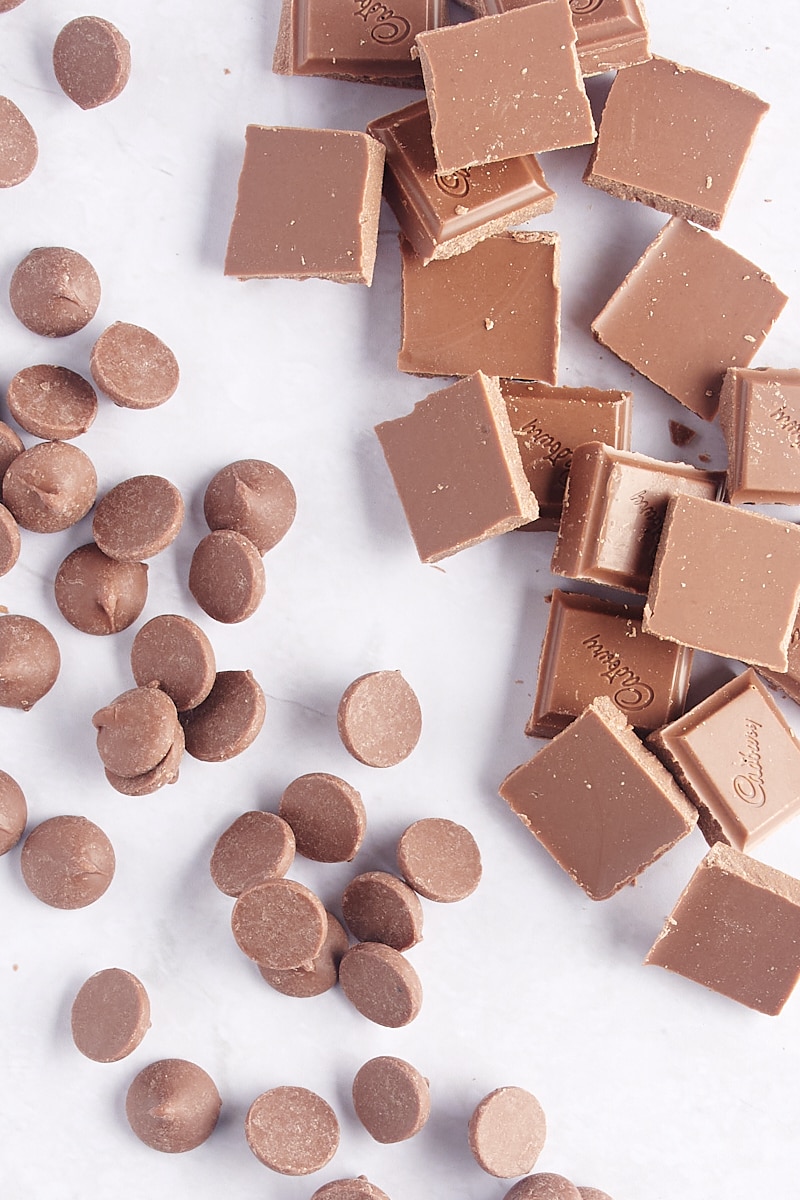
Milk Chocolate
Milk chocolate is made up of the same components as dark chocolate, but it is also made with milk solids. The milk solids used can be liquid milk, powdered milk, or condensed milk. In the U.S., milk chocolate is required to be at least 10% cacao and 12% milk solids.
In comparison to dark chocolate, milk chocolate is sweeter and softer with a more subtle chocolate flavor. You can certainly bake with it, but its softer texture means it will behave differently. With a few exceptions, I mostly use milk chocolate in baking in the form of chocolate chips. It’s also often enjoyed just for eating.
Recipes made with milk chocolate
- Milk Chocolate Brownies
- Peanut Butter Bundt Cake with Milk Chocolate Ganache
- Caramel Chocolate Chip Cookie Bars
- Peanut Butter Cookies with Milk Chocolate Chunks
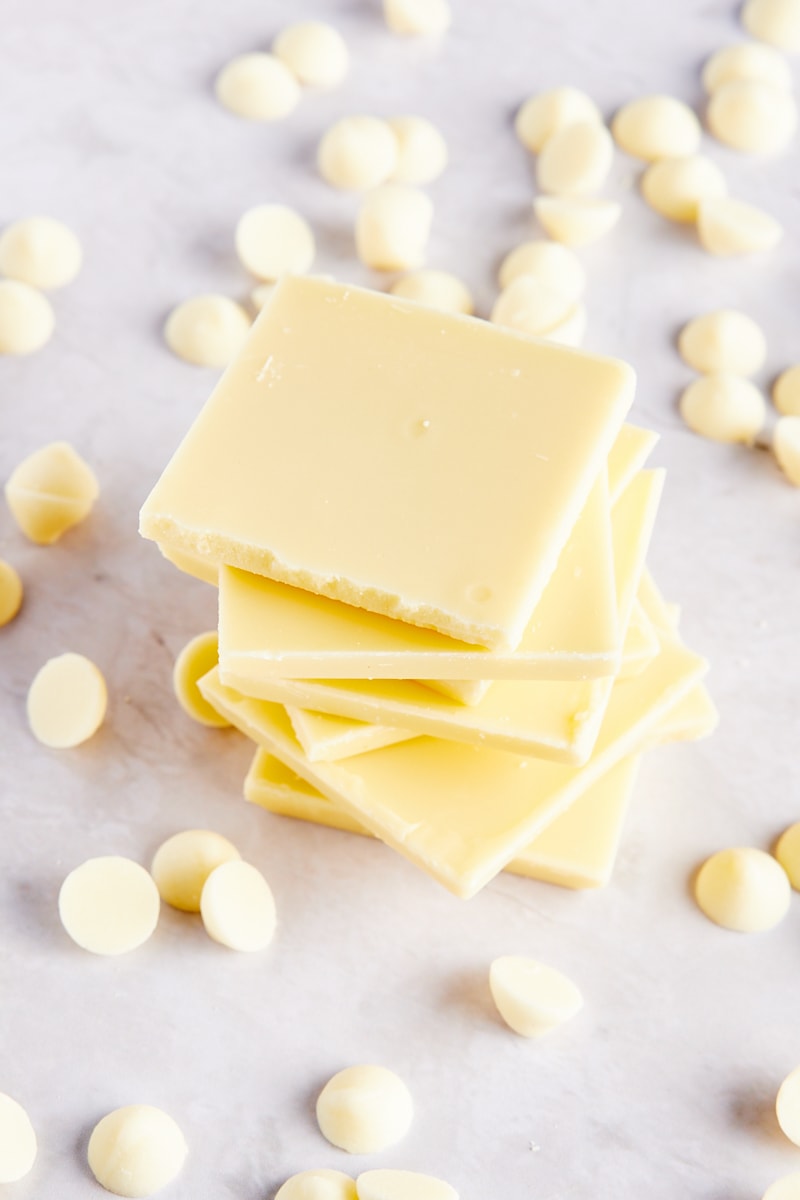
White Chocolate
White chocolate is composed of cocoa butter, sugar, and milk. While its color and flavor are different from milk and dark chocolate, it is still considered to be chocolate. There are no cocoa solids present, which accounts for the difference in color and flavor. There must be at least 20% cocoa butter to be labeled white chocolate along with 14% milk and no more than 55% sugar.
White chocolate vs white baking chips
Don’t confuse white baking squares, white baking chips, or vanilla-flavored varieties with white chocolate. These products use vegetable fats in place of the cocoa butter, meaning these can’t be labeled as chocolate. While these products work well for melting, they are generally considered to be inferior in taste. (Of course, taste is subjective!) If you’re unsure if a product is actually white chocolate, just check the ingredients list for cocoa butter as the primary ingredient.
Recipes made with white chocolate
- White Chocolate Macadamia Sandwich Cookies
- Raspberry White Chocolate Icebox Pie
- White Chocolate Brownies
- Peanut Butter White Chocolate Blondies

Chocolate Chips vs Chocolate Bars and Discs
Chocolate chips are designed to hold their shape through baking. Think of a chocolate chip cookie. Those little chocolate chips may be quite melty right out of the oven, but overall they do stay pretty much in their original shape.
Chocolate discs, fèves, and bars, on the other hand, will generally melt much easier. When melting chocolate for a recipe, I find that I get better results with chocolate discs or bars than I do with chocolate chips.
Using discs, fèves, or chopped chocolate bars instead of chocolate chips in something like a chocolate chip cookie will likely give you melted chocolate puddles instead of little bites of chocolate. That’s not necessarily a bad thing, as evidenced by the fantastic Jacques Torres Chocolate Chip Cookies. Just keep the different melting behaviors in mind before making a substitution.
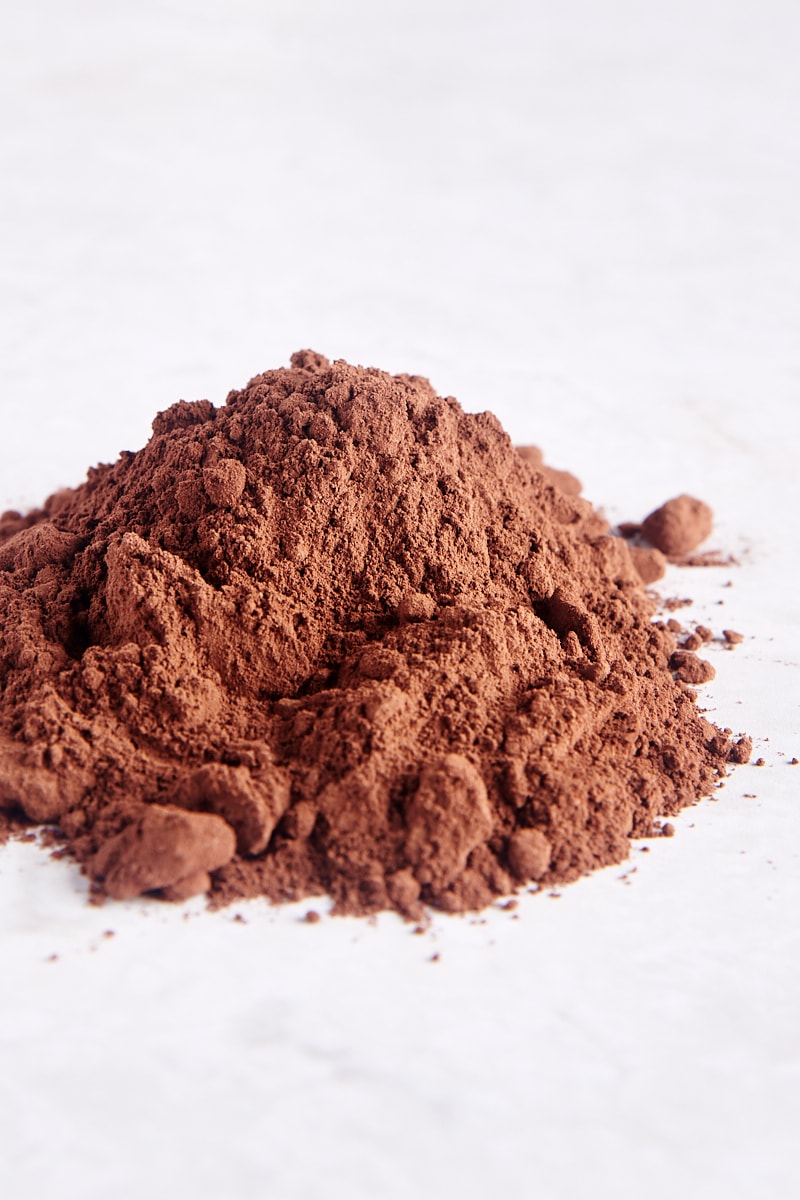
Cocoa Powder
Unsweetened cocoa powder is chocolate liquor that has had the cocoa butter removed. It is then ground into powder.
There are two basic kinds of cocoa powder: natural and Dutch process. Dutch process cocoa powder has been made more neutral than the acidic nature of natural cocoa powder. Natural cocoa powder tends to have a stronger flavor, while Dutch process has a more mellow flavor.
Because of their different chemical properties, natural cocoa powder is most often used in recipes that also use baking soda, while Dutch process cocoa is used along with baking powder. There’s a lot more to consider about that when deciding which type of cocoa to use, but that general rule often applies.
Recipes made with cocoa powder
- Dark Cocoa Powder Brownies
- 6-Inch Chocolate Cake with Marshmallow Frosting
- Chocolate Sour Cream Bundt Cake
- Mocha Muffins
- Cocoa Cake
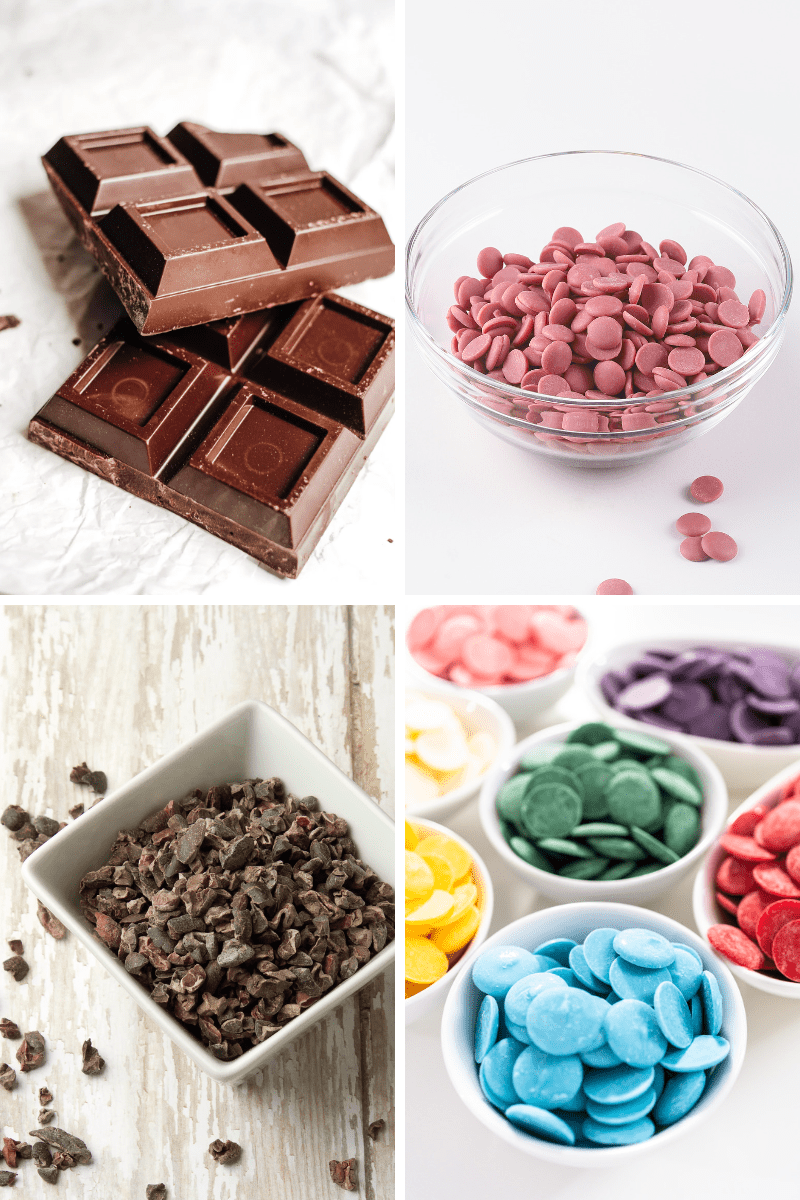
Other Types of Chocolate
There are other types of chocolate, of course, but they aren’t frequently used for home baking. For most of our purposes, the chocolates we’ve discussed will perfectly suit our needs. Let’s briefly talk about a few more types of chocolate that may not be as familiar to you.
Couverture chocolate is the type of chocolate primarily used by professional bakers for dipping and candy making. It has high contents of cocoa butter and chocolate liquor and melts very easily. It’s also usually fairly expensive.
Ruby chocolate is new to the chocolate scene, having first been made by Barry Callebaut in 2017. It’s made from ruby cacao beans, giving it its signature pink hue. It has a berry-like flavor, making it quite different from more common chocolate varieties.
Gianduja chocolate is a blend of chocolate and hazelnut paste. It’s darker than milk chocolate but lighter than dark chocolate. If you’ve had Nutella, then you’ll have a general idea of the taste of it.
Cocoa nibs, or cacao nibs, are dried, roasted, and crushed cacao beans. With no added sugar, these crunchy bits taste dark and bitter.
It’s worth mentioning that products labeled candy coating are not chocolate. They’re designed to melt easily but don’t have the same taste and feel as chocolate.
What Makes a Good Quality Chocolate
Most of what makes a chocolate of good quality is about personal preference. What may taste great to one person may not appeal to another. Besides taste, however, there are some other qualities to consider.
Texture
A good chocolate should be firm and have a good, sharp snap to it when broken. (White chocolate and milk chocolate have less of this because of the presence of milk solids and more sugar.) If it’s crumbly or gives too easily, then it’s likely not a great choice.
Besides that texture, chocolate also has texture in your mouth. It should taste smooth and not gritty or waxy. Because cocoa butter melts right around body temperature, the chocolate should slowly melt in your mouth.
Taste
I probably don’t need to tell you that it’s not a good sign if the chocolate leaves a bad taste in your mouth. In addition, however, a good chocolate flavor should linger for a few minutes after eating.
Appearance
Visually, chocolate shouldn’t have any blemishes or discolorations. Chocolate can “bloom” due to environmental factors (see below), and that’s generally not a bad thing. But bubbles, discolorations, or other noticeable flaws aren’t a good sign for the quality of the chocolate.
Smell
Chocolate also has an aroma. A good quality chocolate should smell like chocolate. That may seem like a silly statement, but remember that there can be other ingredients added to chocolate. Chocolate also easily picks up smells from whatever it is stored near. So if you smell something else more strongly than chocolate, then the chocolate flavor is not likely to come through in baking.
Cost
One thing that doesn’t define quality chocolate is price. Sure, a pricier chocolate may be made in a way that constitutes a higher price tag, but there are more affordable brands that serve your home baking extremely well. Some of my favorites are Guittard and Ghirardelli.
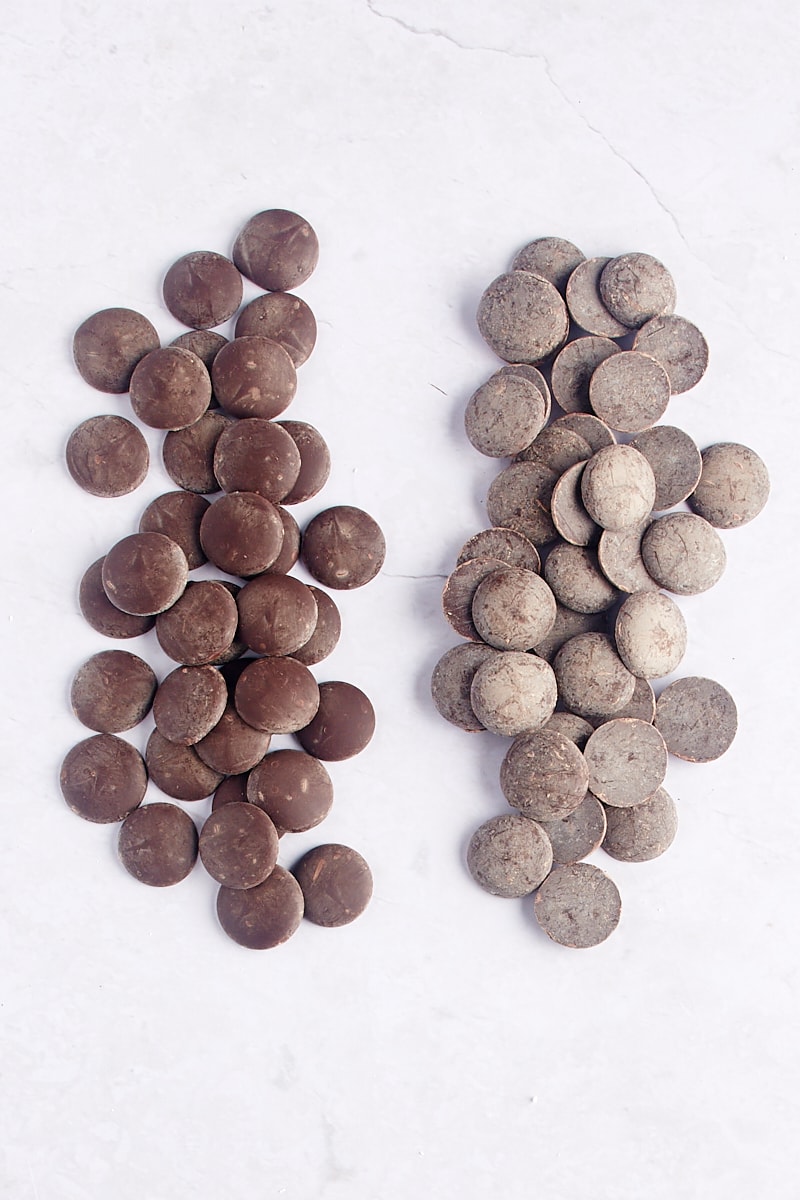
What is Chocolate Bloom?
Have you seen chocolate that’s taken on a bit of a cloudy, gray tint on the surface? That’s called bloom. Exposing chocolate to humidity, light, or heat can cause the sugar and/or the fat to rise to the surface. While that’s not a great look, it doesn’t usually have a significant impact on the flavor.
If you’re melting the chocolate for your baking recipe, then you aren’t likely to notice a difference in your baked goods. Even with chocolate chips mixed into cookies or a cake, the heat from the oven will usually heat them enough to dissipate the bloom.
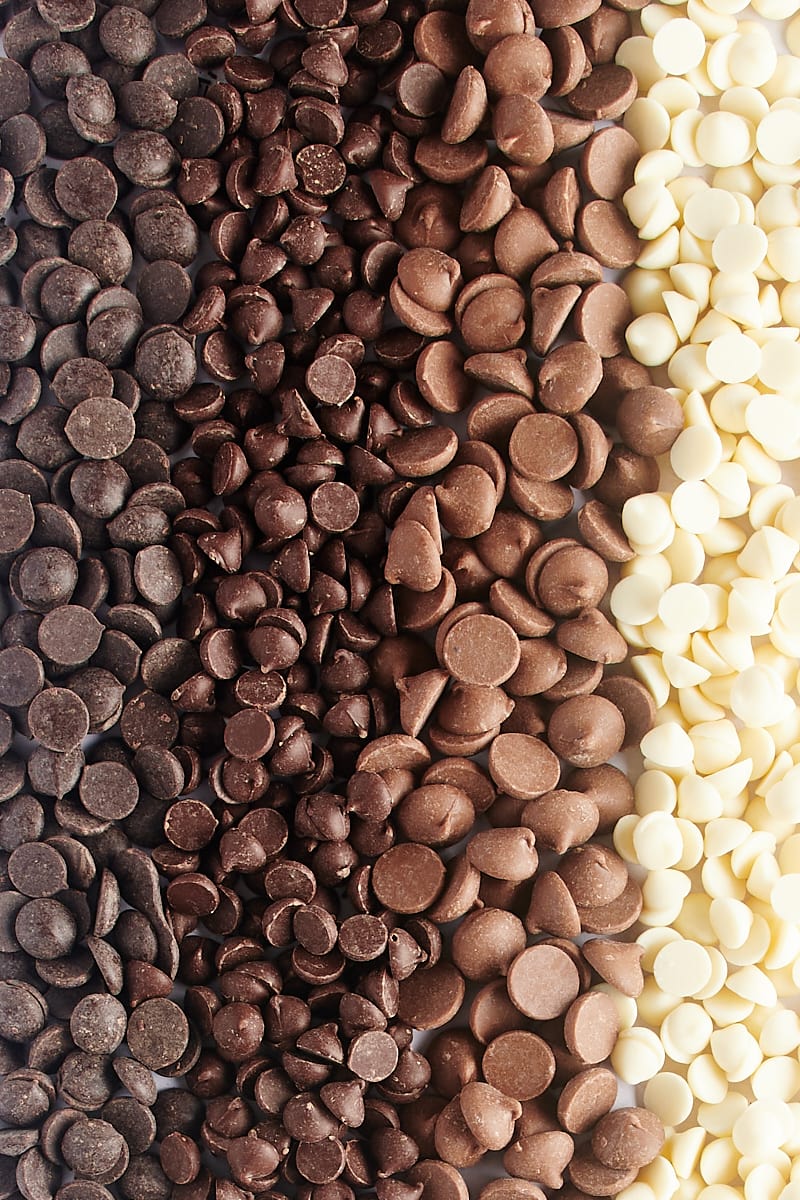
How to Store Chocolate
Keep your chocolates in a cool, dark, dry place that doesn’t experience much temperature fluctuation. You want chocolate kept cool because you don’t want it to melt. Light (even artificial light!) can lead to oxidation, which can affect its wonderful flavor. Keeping it away from moisture helps keep chocolate from absorbing other smells and also prevents blooming (see above). A varying temperature environment can affect chocolate’s taste and texture.
Chocolate is best kept in an airtight container. It tends to absorb the aromas of whatever it’s stored near, so keep it sealed away from other ingredients. If your chocolate isn’t in resealable packaging, then use a zip-top bag or another airtight container after the package has been opened.
If your solid chocolate is stored properly, it can keep for several months. Dark chocolate will keep longer than milk chocolate and white chocolate because of its lack of milk solids. Because of other ingredients present, that storage time may vary. Check your chocolate’s packaging for a “best by” date.
Cocoa powder should also be stored in an airtight container in much the same way. While its shelf life can be quite long, it does tend to lose its flavor over time.
Refrigerating and Freezing Chocolate
Given the ideal conditions for storing chocolate, it makes sense that it shouldn’t be stored in the refrigerator. The moisture present will cause it to absorb every other smell in there and very likely lead to blooming.
If you live somewhere that doesn’t provide a cool, dry place to store your chocolate in your kitchen or pantry, then refrigerating or freezing are options, albeit not optimal ones. Just make extra sure it’s in an airtight container. Then bring it to room temperature before baking with it. To bring it to room temperature, don’t take it out of the container until it’s completely thawed or condensation may form and affect the texture and flavor.

